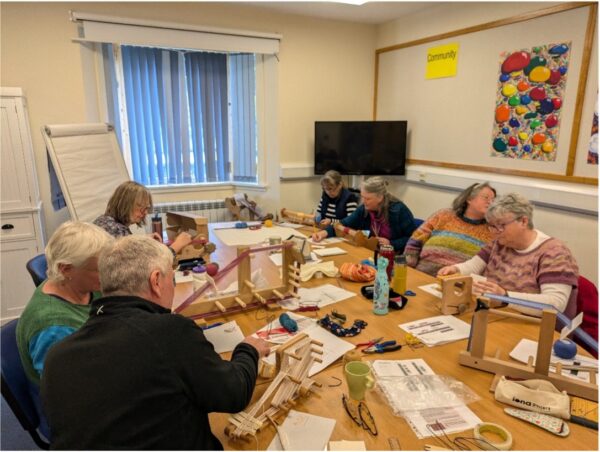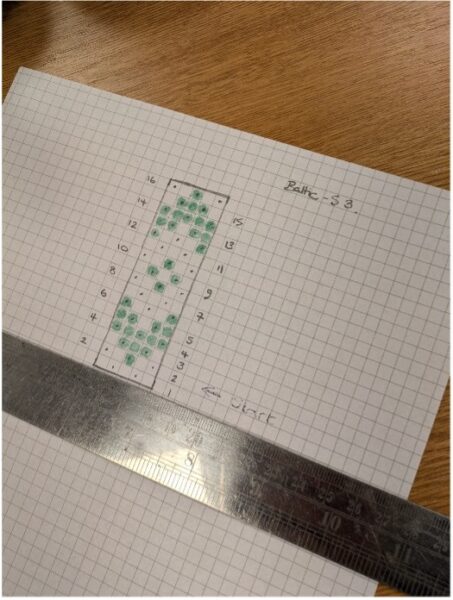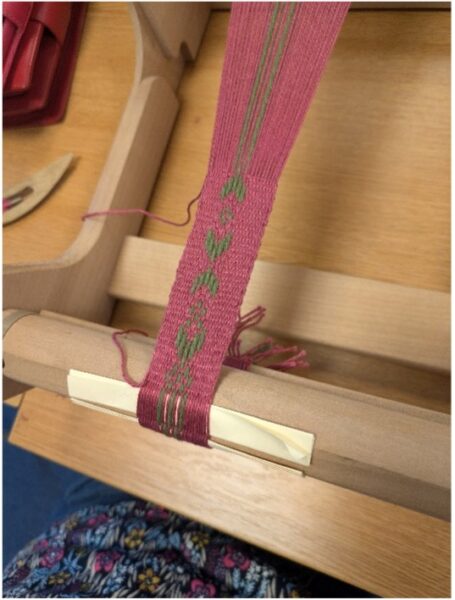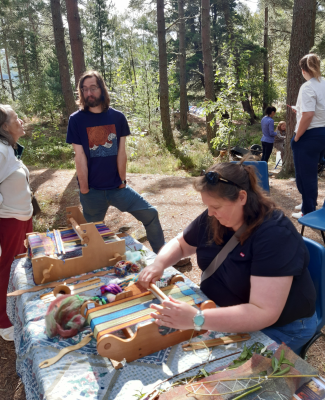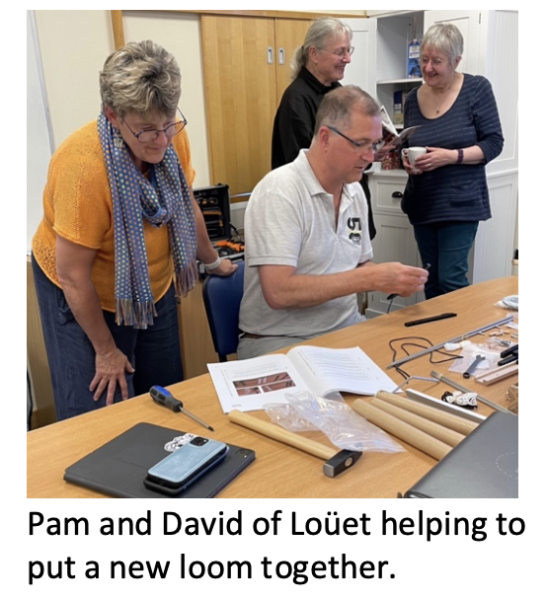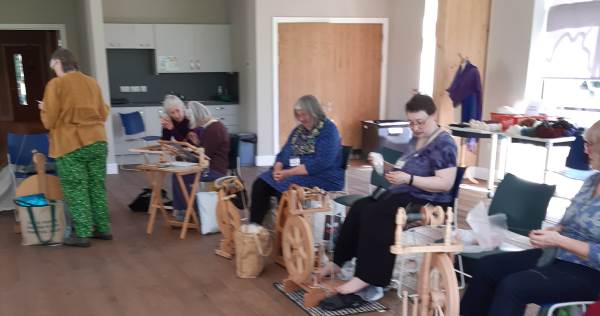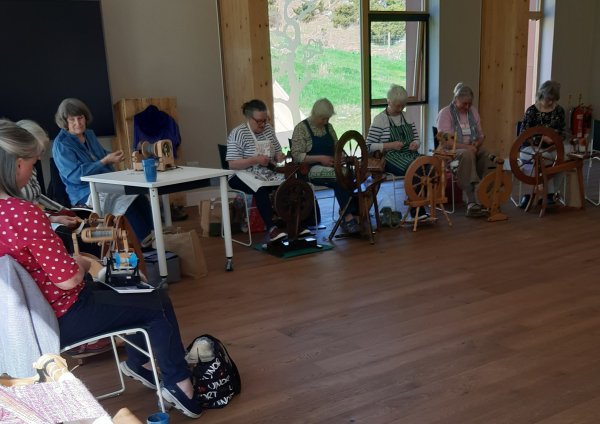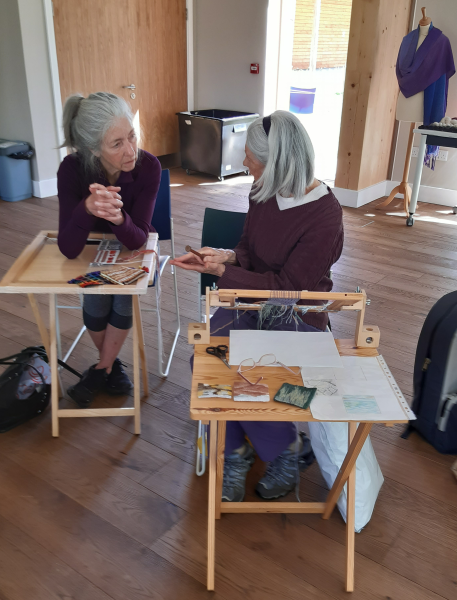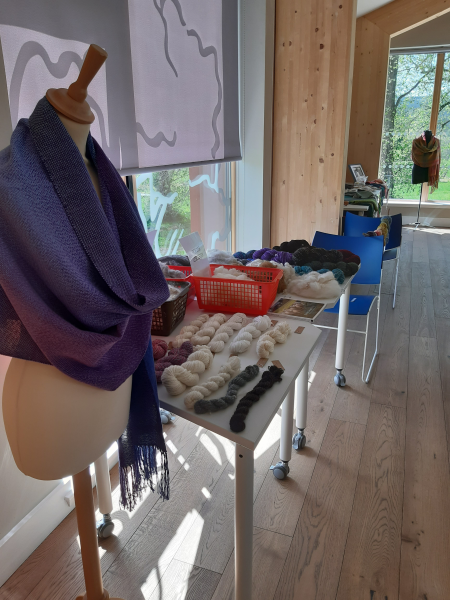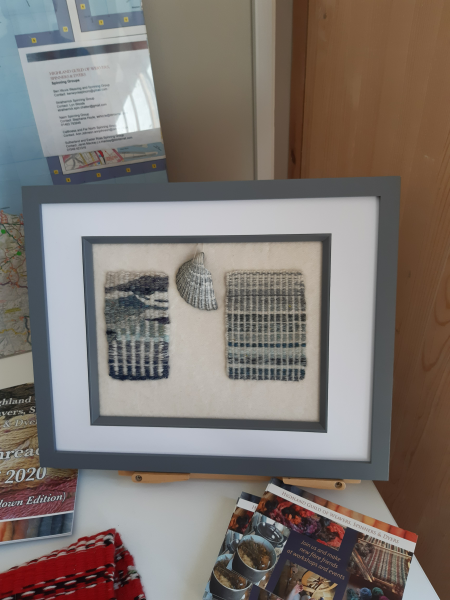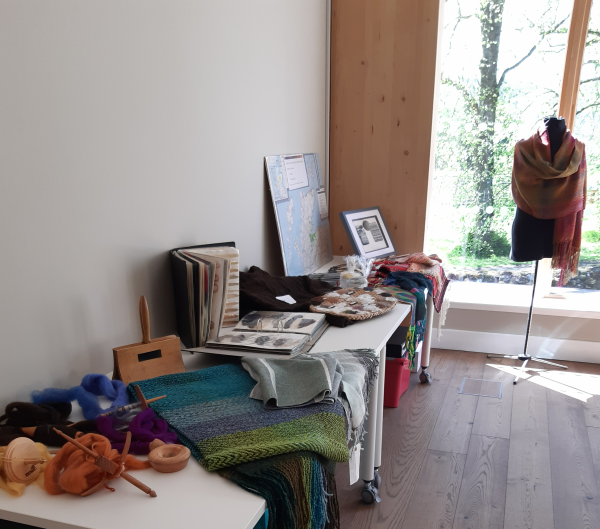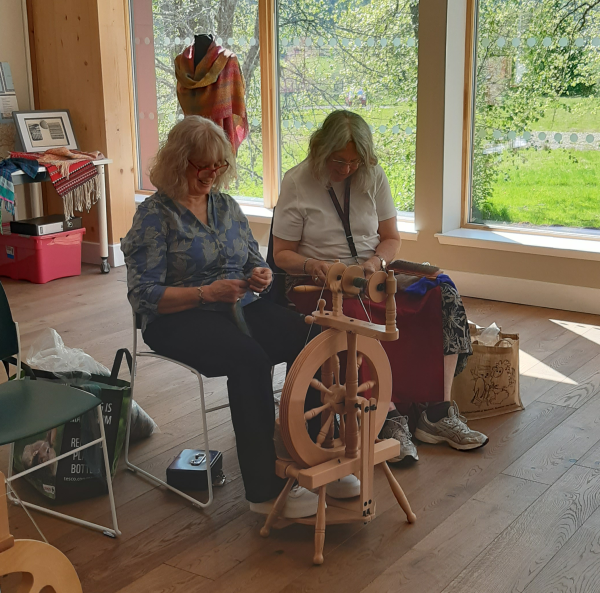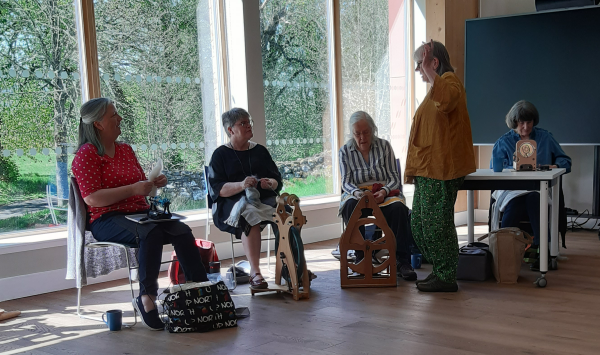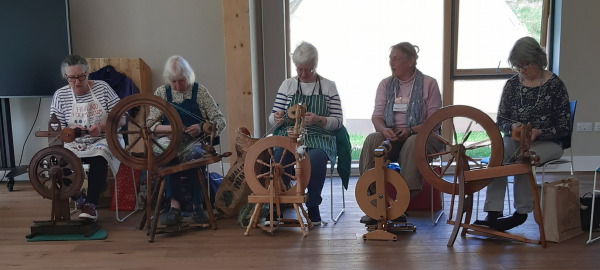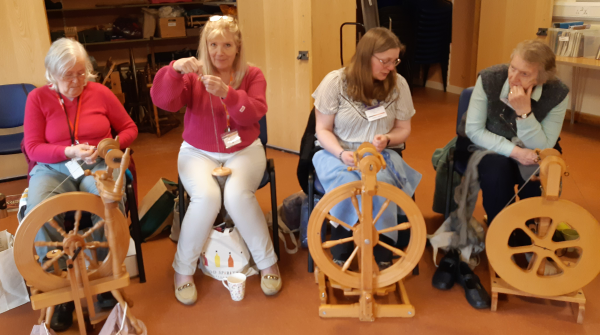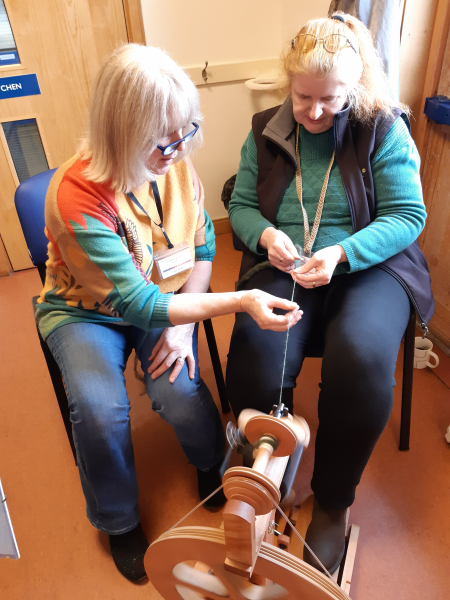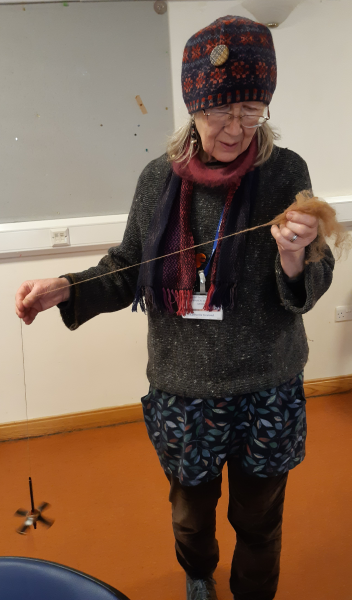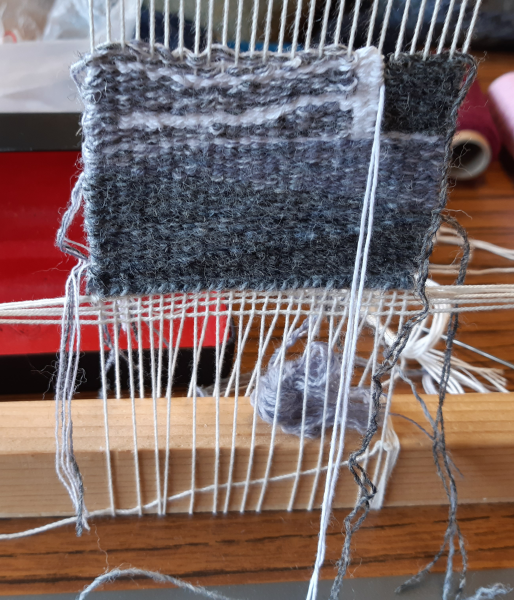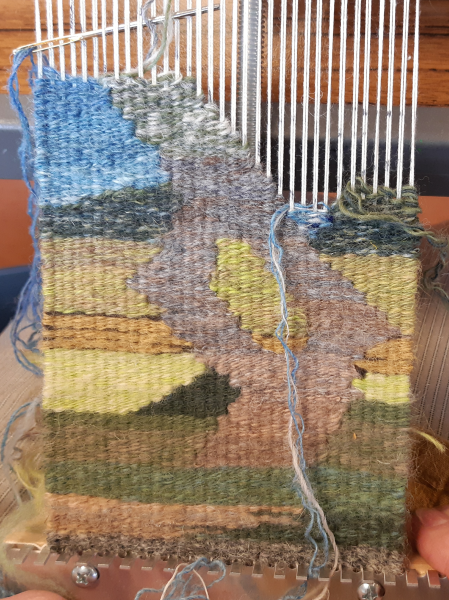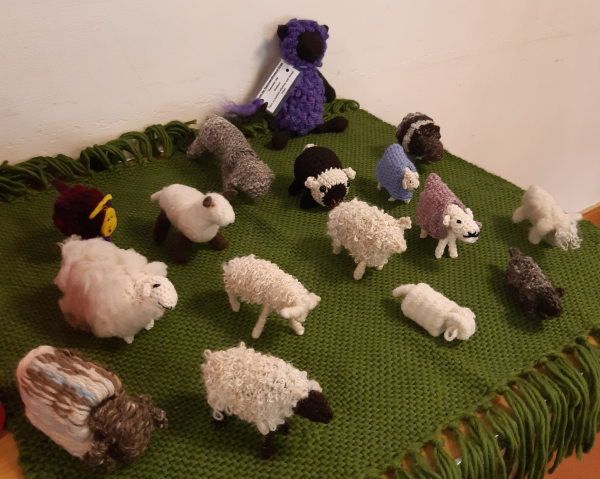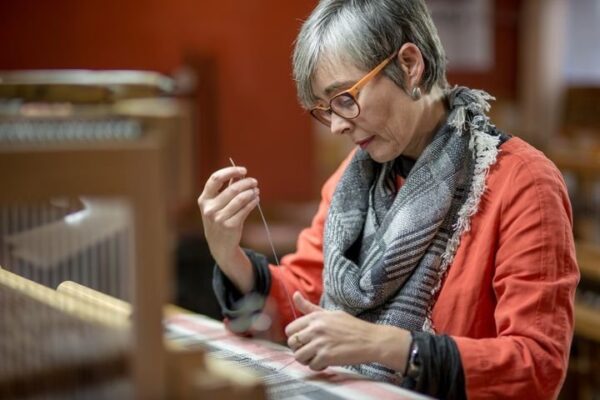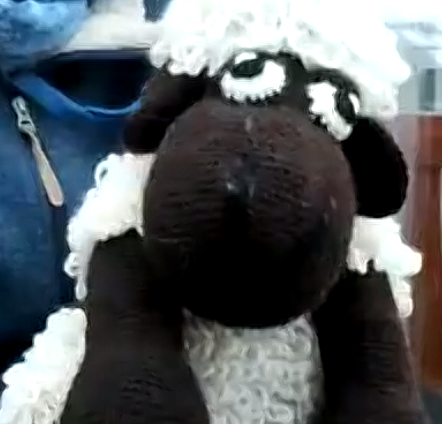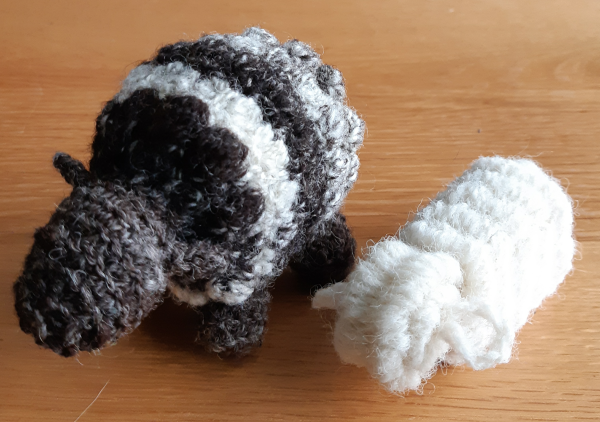What a wonderful day! The weather was kind, the venue perfect for our needs, and the workshop both fun and inspiring! This was our first time at Glachbeg Croft, where we were made very welcome. We set up for the dyeing in an open sided barn – outside, but undercover, and with an earth floor. We also had use of a modern building which is used for workshops etc, where we could sit down for tea or coffee and eat our lunch.
Susan started us off with shibori. We tore up old cotton sheets so that everyone had two or three pieces of cloth to dye. Then Susan showed us how to fold and tie the material tightly to exclude dye from some areas – she had brought small blocks of wood, buttons and pegs to include to make different patterns. Once the fabric parcels were tightly tied, dye was applied liberally to the exposed parts, then after a quick whizz in the microwave, they were left to set. We were using Procion fibre reactive dyes, with sodium carbonate as fixative for cotton and other cellulose fibres – no heat is needed to fix the dye, but a minute in the microwave helps to get the process started. Those who had used anything which included metal to make their patterns couldn’t microwave, but the results were just as good when the pieces were unwrapped later. After everyone had tied up a couple of pieces, we had a tea break and Susan introduced the idea of stitching then drawing up the stitches tightly, as another way of excluding dye from some areas of the fabric.
Once dye had been applied to the stitched samples, Susan introduced something new to everyone: Jacquard Solarfast dyes. These were applied to the fabric in the darkest part of the barn, then objects (leaves, coins, etc) were arranged on top, and the pieces of fabric then set out in the sun. We left them while we had lunch, then carried them into the back of the barn again and quickly removed the leaves etc and washed the fabric as thoroughly as possible to remove any residual dye. This is important as any dye remaining will react with the light and the pattern will be lost. The initially pale colour had darkened where the fabric was exposed to the sun, but remained pale where it had been covered, leaving an imprint of whatever had been laid on top.
By this time everyone was curious to see the outcome of the shibori experiments, so these were unwrapped and admired. Some had worked better than others, but all were attractive. Those who hadn’t used the stitching technique before mostly found that their stitching hadn’t been pulled tight enough – a learning point for next time. The fibre reactive dyes can take 24 to 48 hours to fully set, so participants were advised not to rinse their work till the following day at least.
In the afternoon Susan introduced the use of acid dyes on wool. She gave everyone pre-soaked tops in white, grey, brown and black, and a little piece of fleece. These were to be dyed with the same solid colour to show how the end results varied. She then introduced rainbow dying – playtime! Lay a length of pre-soaked tops on clingfilm, add splashes of different colour dyes at intervals, squish to blend where the colours meet, roll in the clingfilm, closing the ends, and microwave! The wool needs to be pre-soaked so that it takes up the dye effectively, but should be squeezed out before applying the dye. The fixative for wool is lemon juice or vinegar, and the dyes need to be heat fixed, so the microwaves worked hard for the rest of the day.
At the end of the day everyone had a range of samples, and a lot of ideas for more experiments. Thank you, Susan for a great day!
[envira-gallery id=”111591″]
